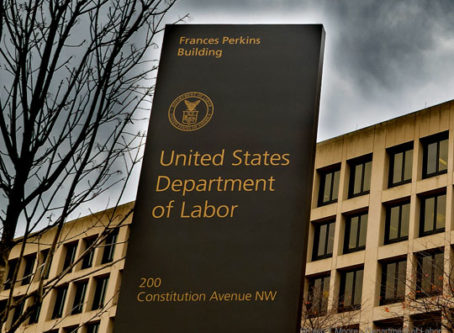Support for carbon dioxide removal (CDR) is growing globally. Governments are, it seems, beginning to listen to the growing chorus of scientists who have warned that deploying CDR is essential to avoid catastrophic climate change. Government funding for research and deployment of CDR is increasing. Many governments are beginning to include at least some form of CDR in their portfolio of climate policies and international commitments. Yet, key issues around definitions, guidance, and climate governance remain.
to avoid catastrophic climate change. Government funding for research and deployment of CDR is increasing. Many governments are beginning to include at least some form of CDR in their portfolio of climate policies and international commitments. Yet, key issues around definitions, guidance, and climate governance remain.
The recent boost for CDR is linked to an emerging trend in climate policy which understands CDR as supplemental to urgent action on decarbonization and overall greenhouse gas (GHG) emission reductions (rather than a replacement for those activities). In its Sixth Assessment Report, released last year, the Intergovernmental Panel on Climate Change (IPCC) concluded that global carbon dioxide emissions must reach net-zero by the early 2050s to limit warming to 1.5oC above pre-industrial levels. The IPCC further concluded, with high confidence, that the deployment of CDR to “counterbalance hard-to-abate residual emissions is unavoidable if net-zero carbon dioxide or GHG emissions are to be achieved.” Given this, support for CDR, and inclusion of CDR in climate policy, is increasing worldwide. While countries generally do not explicitly reference CDR in their Nationally Determined Contributions (NDCs) submitted to the Paris Agreement, many include the CDR approaches of increasing soil and forest carbon. Some parties are also starting to include CDR in their Long-Term Low Emission Development Strategies (LT-LEDs), which are optional but encouraged under the Paris Agreement, and address scenarios from 2050 and beyond.
Examples abound of increasing domestic policy support for CDR. In the US, the 2021 Infrastructure Investment and Jobs Act (IIJA) authorized the Department of Energy to spend $3.5 billion over the next five years to support the development of four regional direct air capture (DAC) hubs, designed to remove carbon dioxide from the atmosphere and permanently store or utilize it in long-life products (e.g., concrete). The IIJA also allocated funding for other CDR research and development projects, including projects aimed at advancing measurement, reporting, and verification. Additional support for CDR was provided in the 2022 Inflation Reduction Act, which, among other things, expands existing tax credits (established in section 45Q of the Internal Revenue Code) for geologic storage of carbon dioxide captured at point sources or the ambient air via DAC.
Meanwhile, in the EU, the European Commission released its Proposal for a Regulation for EU certification of carbon removals in November 2022. The regulation is expected to improve the quantification of CDR and to scale up removal activities within the EU by unifying and ultimately facilitating the trade of CDR-based credits. The EU, US, and several other countries are also participating in the CDR Launchpad, which aims to reduce costs of CDR-related technologies to less than $100 per ton. To this end, members committed to “collectively contribute at least $100 million by 2025 to support CDR pilot projects and demonstrations globally.”
While additional funding for CDR technologies and increased inclusion of CDR in climate portfolios and international commitments are important milestones, several outstanding governance issues remain. Left unresolved, these will hinder the deployment and effectiveness of CDR. They include the lack of a proper definition of CDR and related absence of detailed rules on inclusion of CDR in the Paris Agreement’s market mechanisms, and guidance on how to incorporate CDR in long-term policies.
Existing international definitions of CDR are general and currently under development. The 1992 United Nations Framework Convention on Climate Change defined sink as “any process, activity or mechanism which removes a greenhouse gas, an aerosol or a precursor of a greenhouse gas from the atmosphere.” The Paris Agreement did not reference or define CDR, nor did it define the term “removals.” The Paris Agreement did, however, discuss the need to “achieve a balance between anthropogenic [GHG] emissions by sources and removals by sinks” (Article 4) and directed parties to account for removals in their NDCs and emissions inventories (Articles 4 and 13). The IPCC, in the 2018 Glossary to their Special Report on Global Warming of 1.5º C, defined CDR as “[a]nthropogenic activities removing [carbon dioxide] from the atmosphere and durably storing it in geological, terrestrial, or ocean reservoirs, or in products. It includes existing and potential anthropogenic enhancement of biological or geochemical sinks and direct air capture and storage, but excludes natural [carbon dioxide] uptake not directly caused by human activities.” The IPCC Sixth Assessment Report Working Group 3: Mitigation of Climate Change added that “CDR methods vary in terms of their maturity, removal process, time scale of carbon storage, storage medium, mitigation potential, cost, co-benefits, impacts and risks, and governance requirements.” Definitions of removals under the framework of the Paris Agreement should consider adding references to the complexity included in the IPCC definitions and the specificities associated with each removal activity.
While the Paris Agreement implicitly approves of the use of “removals” to mitigate climate change, questions remain as to whether and when removals can be traded via the market mechanisms established in Articles 6 of the Paris Agreement. The Article 6.4 mechanism aims to allow trading of emissions reductions units (ER) generated from emissions reductions and/or removal activities whose use is authorized to achieve NDC targets and/or other international mitigation purposes. Activities involving removals under the Article 6.4 mechanism have to meet specific monitoring, reporting, and accounting requirements, which are currently under development, according to the recommendation on guidance for activities involving removals under the Article 6. 4 Mechanism of the Paris Agreement, issued by the Supervisory Body of Article 6.4 (SB) the night before the start of COP 27. Stakeholders can offer input about such activities until March 15, 2023, after which the SB will further develop its determinations.
More specifically, the SB will consider accounting, crediting periods, monitoring and reporting, negative environmental and social impacts, and how to account for removals’ reversals and avoidance of potential leakage (referring to when the carbon dioxide previously removed and stored, or during the storage process, is released back to the atmosphere). The SB is expected to examine a major controversy surrounding CDR: the definition of permanence (often called durability), as the IPCC Sixth Assessment Report Working Group 3 limited itself to referring to removals as activities that store carbon “durably,” without defining that term. It is noteworthy that COP 27 discussions indicate parties are cognizant of distributive and protective justice considerations regarding CDR, as well as of its co-benefits and risks to humankind and the environment.
Uncertainties also linger regarding how best to incorporate CDR into long-term climate policies. Paragraph 35 of the Glasgow Climate Pact, adopted at COP 26 in 2021, notes the importance of aligning NDCs with long-term low GHG emission development strategies. More work needs to be done concerning the need for the separation of targets for emissions reduction and CDR. Reiterative research findings show that, to avoid substitution and to ensure that CDR delivers the necessary additional carbon removal, “targets and accounting for negative emissions should be explicitly set and managed separately from existing and future targets for emissions reduction.” Only then should targets, timetables, accounting methods, and incentives be designed for the different modalities needed. Ultimately, the definition of the target will determine how much CDR is required; ambiguity would lead to inaccurate estimates of the necessary amount of CDR required and which CDR methods should be favored. This carefully designed approach should reduce the risks relating to CDR’s potential mitigation deterrence effect.
In conclusion, climate policies are increasingly welcoming CDR. Progress may be hindered, however, as several consequential governance issues are still up in the air.






